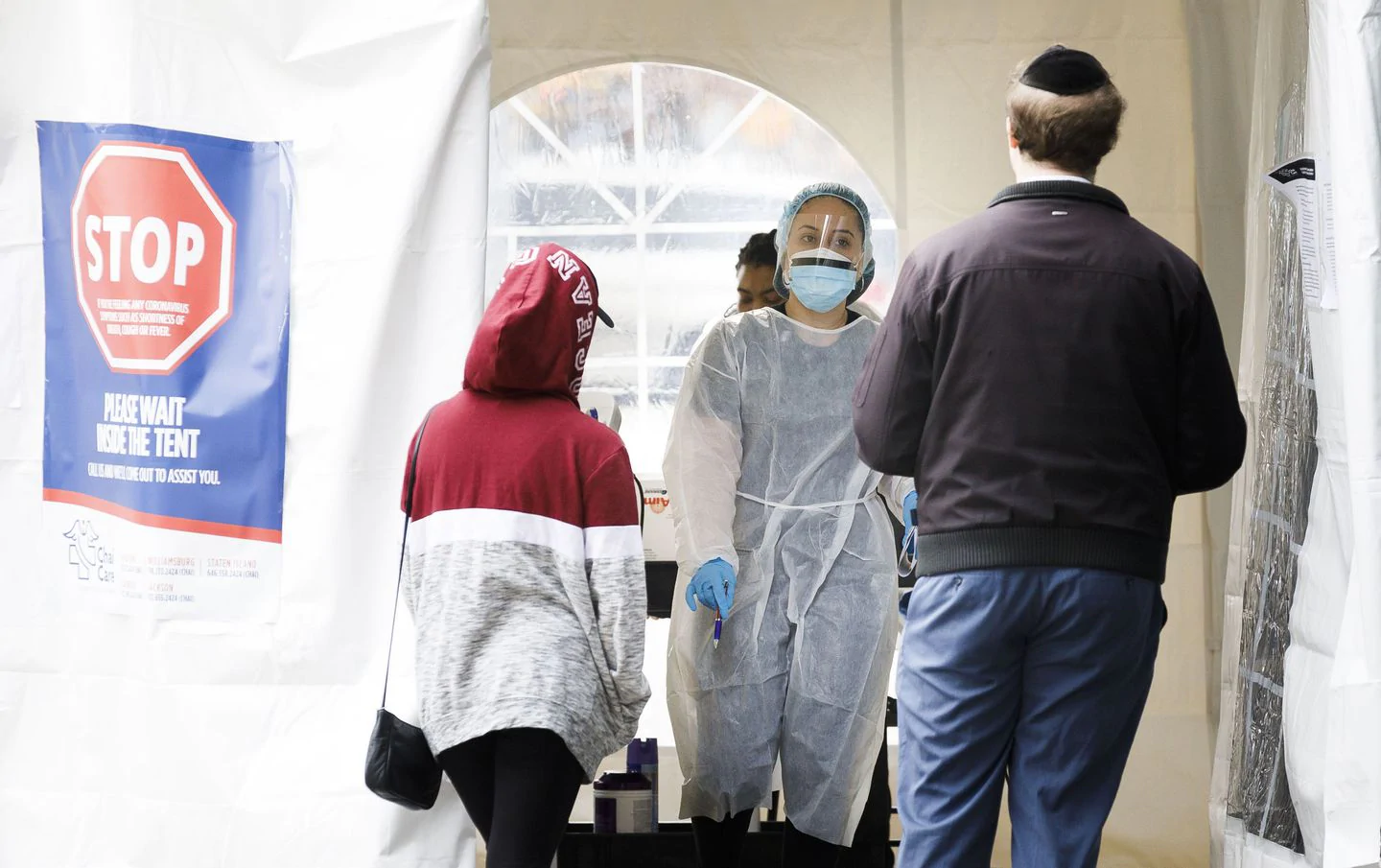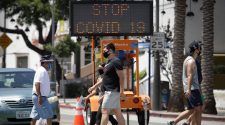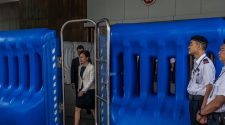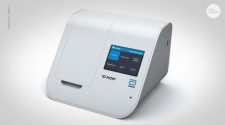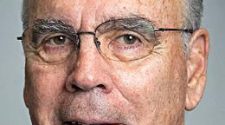As cases spike sharply in those places, they are hunkering down for an onslaught, and directing scarce resources where they are needed most to save people’s lives. Instead of encouraging broad testing of the public, they’re focused on conserving masks, ventilators, intensive care beds — and on getting still-limited tests to health care workers and the most vulnerable. The shift is further evidence that rising levels of infection and illness have begun to overwhelm the health care system.
Health officials are struggling with a complicated message — more people can get tested, but those with mild symptoms should stay home and practice social distancing. Some go so far as to warn that widespread testing at this point could threaten the U.S. response by burning through precious supplies just as a tidal wave of sick people descend on the system
“In a universe where masks and gowns are starting to become scarce, every time we test someone who doesn’t need one, we’re taking that mask and gown away from someone in the intensive care unit,” said Demetre Daskalakis, deputy commissioner for the Division of Disease Control of the New York City Department of Health and Mental Hygiene.
Jeff Engel, executive director of the Council of State and Territorial Epidemiologists and former health director for North Carolina said it was time for a “pivot” in the testing strategy.
“If you have mild illness and can stay at home … don’t get tested,” Engel said. “You’re not only putting others at risk if you go out and about with symptoms, you’re wasting all these valuable resources we really need to conserve for society.”
Other county and state health officials are sounding similar alarms — just as drive-through testing sites are finally opening and weeks after federal officials announced 1.1 million tests had been shipped out and another 4 million more were coming.
Los Angeles County health officials advised doctors in a letter Thursday to give up on testing patients as a strategy to contain the outbreak, instructing them to test patients only if a positive result could change how they would be treated, the Los Angeles Times reported. The department “is shifting from a strategy of case containment to slowing disease transmission and averting excess morbidity and mortality,” according to the letter.
That same day, Sacramento county officials ordered residents to stay home except for essential activities, part of the city’s evolving strategy away from efforts to contain the virus by identifying and isolating each case and tracing that person’s contacts — a laborious process that becomes all but impossible once cases mount. The health order said the intent is to protect the most vulnerable, slow the virus’ spread, and preserve the ability of front-line workers to care for severely ill patients.
In Washington state, where hospital workers have been fashioning makeshift protective medical gear using parts purchased from Home Depot and craft stores, officials are restricting testing to high-risk populations, including health care workers and people with more severe symptoms.
“We’ve asked the public to understand we can’t test everyone, especially if they have mild symptoms or are asymptomatic,” said Jeff Duchin, health officer for Seattle and King County, a hard-hit part of the country.
The shift represents a change in both messaging and strategy after weeks of efforts to expand access to testing after the federal government’s botched rollout of testing kits, which hampered states’ ability to know whether the virus was already circulating and to take steps to try to get ahead of it. Now, the repeated reassurances from various federal officials that testing is plentiful and free have sown confusion. Every day, White House coronavirus task force officials have promised Americans they’re ramping up widespread drive-through testing.
On Saturday, however, they laid out explicit guidelines for who should get tested, stressing that top priority should be given to those who are hospitalized, health care workers and residents of long-term care facilities who have symptoms, as well as people over 65 with symptoms, especially those with health problems like heart and lung disease that place them at higher risk.
“Not every single person in the U.S. needs to get tested,” said Dr. Anthony Fauci, director of the National Institute of Allergy and Infectious Diseases. “When you go in and get tested, you are consuming personal protective equipment, masks and gowns — those are high priority for the health care workers who are taking care of people who have coronavirus disease. … We want to make sure that the people who are taking care of people with coronavirus disease do not endanger themselves because they do not have the protective personal equipment.”
But some state health officials worry that earlier suggestions that everyone who wants a test could get one has sent the wrong message.
“I’m just scared there’s going to be mass confusion when people find out there is a testing site, are worried about their covid status, and they’re going to mob the testing site,” said Michael Fraser, executive director of the association that represents state health directors, ASTHO. “It’s confusing to people to hear that testing is being made available in a much more convenient way, and they think, ‘Hey this is great, let’s get tested.’”
New York City’s Daskalakis said that a recent spike in pneumonia-related hospital admissions, just as other respiratory diseases are receding, is almost certainly attributable to covid19 — and people with a manageable fever and cough who aren’t at high risk should assume they have it and not seek testing.
Doing so exposes health care workers administering tests to people with mild illness and uses up limited protective gear, even though nothing would change for those individuals based on their test results, he said.
As the disease has become widespread, a “negative” test could also provide false reassurance. When one of his patients with symptoms — who sought a covid19 test against his medical advice — tested negative, Daskalakis told the person to presume he had the disease anyway and to isolate himself.
As the flu season recedes, people with cough and fever will increasingly just have to presume they have covid19.
At New York’s Mount Sinai Hospital, which treated the state’s first coronavirus case, only a minority of the hundred-plus patients with respiratory symptoms who come to the emergency department each day get tested for the coronavirus, said Jolion McGreevy, the emergency department medical director.
“The default assumption is yes — anyone who comes in with any kind of fever, cough, respiratory symptom, flu-like illness, we’re making the assumption that they have this,” he said, based on the prevalence of community transmission in New York. “It’s very likely you have it. There’s no benefit for you to test.”
It’s a trade-off between individual and societal good that the United States, with its wealth and technologically-advanced health care system, is not used to making. A test result may be reassuring to individuals who feel unwell, but the mask and health care worker to test someone with mild symptoms are resources that could be used to save someone’s life.
“Because there’s a shortage, you have to think the way the rest of the world thinks. In developing countries, we only recommend testing if it changes how you manage the care of an individual person,” said a government public health official who has worked in the U.S. and Africa who requested anonymity because he was not authorized to speak. “I know it would make you feel better to know what you really have, but it doesn’t change your individual care.”
In an ideal world, public health officials say they should have done wide scale surveillance testing of people with respiratory symptoms much earlier. But city-by-city and state-by-state, officials say they are nearing — or in some cases have already crossed — the line when they must make a hard trade-off:
“In the 2009 influenza pandemic, we stopped testing for H1N1 once the level of illness in the community was so high that it just made more sense to treat based on clinical symptoms,” said Jennifer Nuzzo, an epidemiologist with the Johns Hopkins Bloomberg School of Public Health’s Center for Health Security.
In the coronavirus health crisis, there are no specific treatments.
“Our only defense is to tell people to stay home and to hope that sick people isolate themselves,” she said. While it’s essential for testing capacity to increase, the general public needs to understand what health officials are up against given the shortages.
“We have to target our resources and reserve testing for those who need it most: severely ill and those in high risk professions, such as health care workers,” she said. “We’d cause more harms by encouraging the general public to run out and get tested if they are well or experiencing mild illness.”
Ben Guarino contributed to this story.






